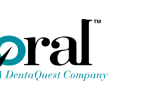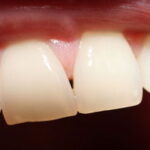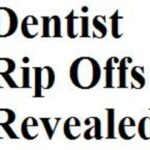Many people go through trying economic times, and unfortunately often healthcare ends up on the back burner. Although a trip to the dentist isn’t something most people look forward to, it may not be a matter of choice for those having financial difficulties. There are some steps to take that can alleviate some of the symptoms of dental problems if you can’t afford a dentist until you are able to make an appointment.
Try to determine the problem
Most of us don’t have a home dentistry kit, but a little logic may help you figure out what the problem is. Consider where the pain is located, if you can, and if there are accompanying symptoms.
A tooth ache could stem from an infection elsewhere. Pain throughout jaw, in forehead, or under eyes indicates that the problem may actually be in your sinuses. Try taking some decongestants. An ear ache can also cause jaw pain.
If several teeth seem to suddenly become sensitive to hot or cold or sweet, the problem could be just sensitive teeth, a problem that can be alleviated with the use of a special OTC toothpaste made for sensitive teeth. If short term use with a product like Sensodyne, the issue may not be more severe.
Broken or cracked teeth are typically more obvious, but a hairline crack can hide well.
Red, swollen gums and pulsating pain without biting down may be caused by an abscess or gum disease. An abscess will also often create a metallic taste in the mouth.
If the pain is truly unbearable, a very serious condition could exist, and it is no longer a question of if you can’t afford a dentist. At this point, you can’t afford NOT to see a dentist or the emergency room. Of course, if you can’t afford a dentist, you probably can’t afford an emergency room visit, but you would likely seek help if the pain were elsewhere in your head. If you don’t feel the pain warrants such a trip, try some other options.
Alleviate the pain
A strong salt water solution will ease the pain from a tooth ache actually originating in the mouth. Use lukewarm water to allow the salt to dissolve and create a comfortable temperature for the injured tooth. Slosh it around in the mouth for a minute or two. While it may not give long lasting relief, the salt water along with ibuprofen or another NSAID should help.
Try other OTC dental pain remedies that can be placed directly on the sore spot. Products like Orajel sometimes lessen pain temporarily. If you want a more natural solution, clove has long been known to have painkilling properties.
If the pain is bothersome at night, sleep sitting up. Keeping blood and other fluids from settling in the tooth’s chamber may prevent some of the pain.
Find a band-aid
Some dental issues can be temporarily repaired. Lost crowns or fillings as well as new cavities can be covered and protected for the short term. Sometimes this covering can relieve some of the pain, as well. Kits by companies like DenTek contain material and instructions for these issues.
If you can’t afford a reconstructive pack (although they can run as low as about $6) or don’t have access to one, a cheaper, more accessible temporary fix for a broken tooth is sugarless gum. The pain from a broken tooth is often due to the exposed root. Covering that root with chewed, sugarless gum should provide some immediate relief, although it obviously won’t last long.
For all dental issues but particularly an abscess, try a baking soda solution. Like the salt solution, mix baking soda with a small amount of lukewarm water as a mouth rinse. Let it remain in your mouth for a couple of minutes. Baking soda actually kills fungi and infections, so this methods works not only to alleviate the pain but to help fix the problem. Its anti-inflammatory properties help with the ache.
Get financial help
If you can’t afford dental work now, you need to find a way to pay for it later. There may be ways to get low-cost dental care in your area. Dental schools often offer lower rates. The students there don’t have as much experience as some other dentists, but the quality of care must meet a minimum level to be offered.
Some dentists offer sliding-scale programs, charging for services according to your income if you can’t afford the flat fee. Call around to see if anyone is willing to give you a fee you can afford.
Check with local social agencies. The Bureau of Primary Health care includes a list of dental offices that allow a number of different payment solutions and uninsured patients.
Keep temporary methods temporary
Seemingly small dental issues can escalate quickly to large and expensive problems. Fixing a small cavity is faster and more economical than a root canal later. Remember that these temporary “fixes” are not solutions to the cause of the pain but to the symptoms. Find a dentist and/or dental plan you can work with, and use these measures only when necessary.
Preventative measures are always important. Good dental practices should help prevent many problems, but these suggestions may come in handy when even the best practices fail and you simply can’t afford to visit a dentist.
References:
“DIY Dentistry.” Dentalfearcentral.com
“Primary Health Care: The Health Center Program.” Bphc.hrsa.gov.
“Health Benefits of Baking Soda.” Natural-homeremedies.org.







